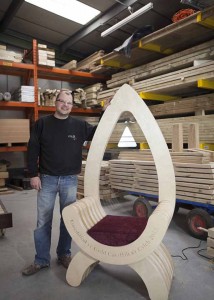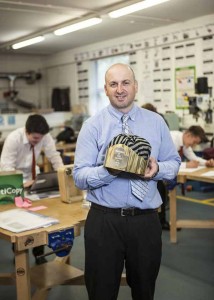Around 90,000 visitors are expected at the Caerphilly Urdd National Eisteddfod, being held at Llancaiach Fawr near Nelson between May 25 and May 30.
Almost 400 competitions will be held throughout the five-day festival, ranging from singing and dancing to drawing and cooking. As well as the competitions, there will be plenty for visitors to see and do.
The Urdd National Eisteddfod is one of Europe’s largest youth touring festivals with over 15,000 children and young people competing. A touring festival, it is held in a different location in Wales each year.
Within the 20 acre festival site, or ‘Maes’, visitors will find a funfair, around 80 stalls selling a variety of different things from jewellery and clothes to picnic tables and trailers.
There will also be an activity field with a climbing wall, quad bikes, trampolines and various workshops as well as live bands.
Activities will be suitable for all, not just Welsh speakers and learners, and will be a brilliant opportunity to see Welsh culture at its best.
Hundreds of local volunteers have been raising money and raising awareness over the last two years to make hosting the Urdd National Eisteddfod possible.

The chair and the crown – the Urdd Eisteddfod’s most sought-after prizes – have been unveiled to the public.
The chair, which is awarded to the best poem in strict or free metre, is a strikingly-modern design incorporating stainless steel tubing, toughened glass, birch plywood and lead lighting.
The glass, which forms the chair’s back, has been sand blasted with the Urdd’s famous triangle logo, which glows and appears to ‘hover’ in the centre of the glass
Carpenter and designer Paul Hogg, from Abertridwr, has created the chair. Paul runs award-winning Craft Wales – an Ystrad Mynach company specialising in the design, production and installation of bespoke timber products.
Mr Hogg, a father-of-three, explained: “I’ve been working with timber for 20 years, but this is the first time I’ve been asked to make an Eisteddfod chair and it’s been a real honour.
“Within 24 hours of receiving the commission, I’d sketched a rough design, and within seven days I’d produced a model – it’s all taken off from there. I felt it was important to use modern materials – I really wanted to make my mark and produce something that hadn’t been done before.
“I’m thrilled with the result and can’t wait to see the chair on the Eisteddfod stage.”
Martyn Rees, a design and technology teacher at Ysgol Gyfun Cwm Rhymni designed the crown – awarded to the best piece or pieces of prose over 4,000 words.
The crown has been made from a single band of brass, which has been etched with different images

representing Caerphilly borough – from Cwmcarn forest to comedian Tommy Cooper’s fez hat, Joe Calzaghe’s boxing glove and the Llancaiach Fawr gardens.
The contours of the valleys have been reproduced along the edging of the crown, while grey and black striped cloth – taken from the original Cwm Rhymni school uniform – forms the cap, which fills the crown’s inner space. A pewter cast of Caerphilly Castle stands proud at the centre of the band.
Mr Rees, who is originally from the Gwendraeth Valley, has taught at Ysgol Gyfun Cwm Rhymni since 1992.
He said: “It was a real privilege to be asked to make the crown – an exciting, once-in-a-lifetime opportunity I wasn’t going to turn down.
“I started working on the design last June, trailing different ideas and building several prototypes. I’ve been working in my spare time and between lessons – it’s been a challenge and I’ve pushed myself outside my comfort zone.
“I’ve really enjoyed the experience and I can’t wait for the crowning ceremony during Eisteddfod week – it will be a proud moment.”

I enjoy visiting the Eisteddfod but I do think the link with the Welsh language needs to be dropped, and more focus is needed on celebrating modern Wales.
Your view is that of former member of parliament for Caerffili, Ness Edwards. The National Eisteddfod came to our town in 1950 and had been hitherto conducted both in Welsh and English. This time the rule was to be ‘Welsh only.’
Ness Edwards was to have delivered his presidential speech in both Welsh and English but decided, late on, to speak entirely in English. He said,
“It would be a tragedy if the predominently English speaking areas are transformed into Welsh Sudetenlands, shut out of all things Welsh by a barrier of our own creation.”
He said of the Eisteddfod, “Once it [the Eisteddfod] becomes a preserve for a minority or coterie none will heed it and the one thing that keeps us all together will have gone from us.”
They are very wise words by him and I cannot agree more. Of course, the irony here is that any attempt to increase Welshness through promoting the language or Welsh history will have the reverse effect as it drives people away.
I enjoy visiting the Eisteddfod but I do think the link with the Welsh language needs to be dropped, and more focus is needed on celebrating modern Wales.
Your view is that of former member of parliament for Caerffili, Ness Edwards. The National Eisteddfod came to our town in 1950 and had been hitherto conducted both in Welsh and English. This time the rule was to be ‘Welsh only.’
Ness Edwards was to have delivered his presidential speech in both Welsh and English but decided, late on, to speak entirely in English. He said,
“It would be a tragedy if the predominently English speaking areas are transformed into Welsh Sudetenlands, shut out of all things Welsh by a barrier of our own creation.”
He said of the Eisteddfod, “Once it [the Eisteddfod] becomes a preserve for a minority or coterie none will heed it and the one thing that keeps us all together will have gone from us.”
They are very wise words by him and I cannot agree more. Of course, the irony here is that any attempt to increase Welshness through promoting the language or Welsh history will have the reverse effect as it drives people away.